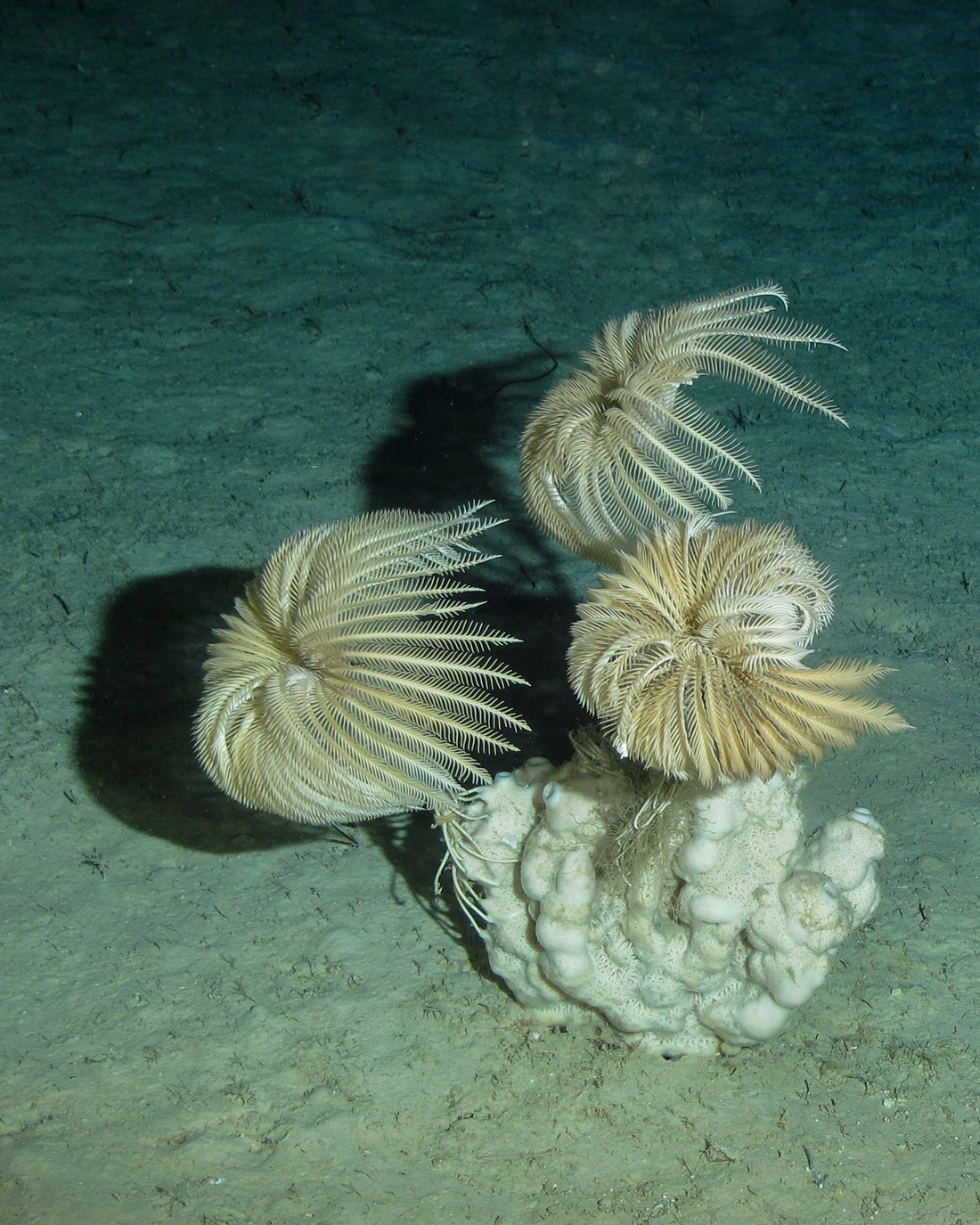
Faculty in the Field (tie): Sponge and Sea Lilies
Harbor Branch Oceanographic Institute
A match made in 360m. Despite advancements in medical treatments, diseases such as cancer, drug-resistant infections, and chronic conditions continue to pose challenges to public health and the global economy. The primary goal of the Marine Biomedical and Biotechnology Research group at Harbor Branch Oceanographic Institute is to discover marine natural products with utility as medicines or as tools to allow us to better understand diseases. Marine natural products have long been important in the discovery of new drugs and are increasingly recognized for their contributions, particularly as anti-cancer, antiviral, and anti-inflammatory therapies. To search for new natural products, researchers explore the deep sea in search of sponges and octocorals which can provide researchers with new and important compounds to test as potential therapeutics. During a recent expedition to Puerto Rico and the U.S. Virgin Islands, the Marine Biomedical and Biotechnology group used the Mohawk Remotely Operated Vehicle (ROV) launched off the Research Vessel F.G. Walton Smith to explore the deep-water habitats for interesting sponges and octocorals.
This beautiful sponge and associated stalked crinoids were observed at a depth of 360 m off Ponce, Puerto Rico. Work is currently underway to determine if this sponge produces compounds that could one day be used as a treatment for human diseases.
Funding for the expedition provided by the NOAA Office of Ocean Exploration grant NA23OAR0110316
Vessel Support: University of Miami R/V F.G. Walton Smith
ROV Support: University of North Carolina Wilmington’s Undersea Vehicles Program Mohawk ROV